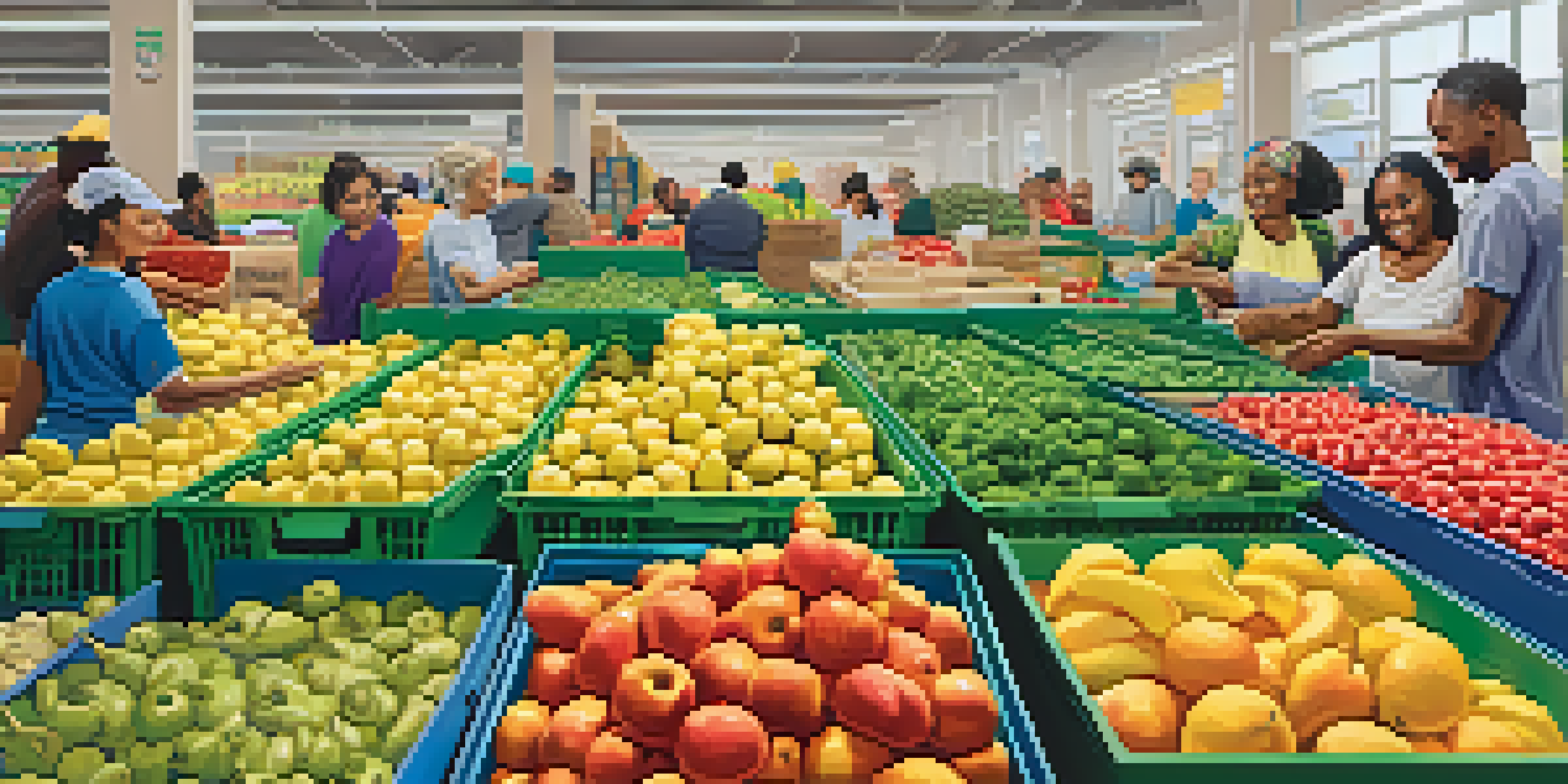Volunteerism and Community Service: NYC in Numbers

Understanding Volunteerism: A Vital Element of NYC Life
Volunteerism is a cornerstone of community life in New York City, where individuals come together to address local needs. It's not just about giving back; it's about creating connections and fostering a sense of belonging. Many residents find that volunteering allows them to engage with their neighborhoods in meaningful ways, bridging gaps across diverse populations.
Volunteers do not necessarily have the time; they just have the heart.
In NYC, volunteerism often manifests through various organizations, from food banks to educational programs. For instance, groups like City Harvest rely heavily on volunteers to help collect and distribute food to those in need. These efforts highlight how volunteers play a crucial role in the fabric of the city, ensuring resources reach the most vulnerable.
Moreover, volunteerism in NYC reflects the city's spirit of resilience and unity. In times of crisis, such as during natural disasters or public health emergencies, volunteers are often the first to leap into action, showcasing the city’s unwavering commitment to help one another.
The Numbers Behind NYC’s Volunteer Efforts
Statistics reveal the impressive scale of volunteerism in New York City. According to recent reports, over 1.5 million residents engage in volunteer activities each year. This significant number underscores the dedication of New Yorkers to support their communities and improve the lives of others.

Additionally, volunteers in NYC contribute an estimated 125 million hours of service annually, translating to a staggering economic impact. This figure not only emphasizes the time and effort put in by volunteers but also highlights the invaluable skills and services they provide to various organizations.
Volunteerism Enhances Community Bonds
In NYC, volunteering fosters connections and unity among diverse populations, addressing local needs and building relationships.
These numbers illustrate that volunteerism is not just a pastime; it's a powerful force that drives social change and community development. Through their efforts, volunteers help to address urgent issues like homelessness, hunger, and education, making a real difference in the lives of countless individuals.
Demographics of NYC Volunteers: Who Gets Involved?
The demographics of NYC volunteers reveal a rich tapestry of individuals from all walks of life. While people of all ages volunteer, young adults aged 18-24 make up a significant portion of the volunteer base, often seeking opportunities to gain experience and give back. This trend shows a growing commitment among millennials and Gen Z to engage with their communities.
The best way to find yourself is to lose yourself in the service of others.
Interestingly, statistics show that women tend to volunteer more than men in NYC, with many choosing roles that align with caregiving and community support. This might be attributed to traditional gender roles or a stronger inclination toward nurturing activities, highlighting the importance of female volunteers in various sectors.
Moreover, diversity is a hallmark of NYC's volunteer landscape. Volunteers come from varied cultural backgrounds, contributing unique perspectives and skills that enrich the community service experience. This blend of diversity not only enhances the effectiveness of programs but also promotes inclusivity and understanding among residents.
The Impact of Volunteerism on Local Communities
Volunteerism has a profound impact on local communities in NYC, fostering social cohesion and resilience. When individuals come together to work towards a common goal, they build relationships that strengthen the community bond. This sense of unity can lead to improved trust and collaboration among residents, creating a more supportive environment.
Furthermore, community service initiatives often address critical needs, such as food security, education, and public health. For example, organizations like Habitat for Humanity engage volunteers to help build affordable housing, positively affecting families and neighborhoods. Such projects not only provide essential resources but also empower residents to take an active role in shaping their communities.
Statistics Show Volunteer Impact
Over 1.5 million New Yorkers volunteer annually, contributing 125 million hours of service that drive social change and community development.
The ripple effect of volunteerism extends beyond immediate benefits; it also inspires others to get involved. When people witness the positive changes brought about by volunteer efforts, they are more likely to contribute their time and skills, creating a cycle of giving that can transform entire neighborhoods.
Barriers to Volunteering in NYC: What Holds People Back?
Despite the many benefits of volunteering, several barriers can prevent individuals from getting involved. In a bustling city like NYC, time constraints often top the list of obstacles. Many residents juggle demanding jobs, family responsibilities, and personal commitments, leaving little room for volunteer activities.
Additionally, some potential volunteers may feel unsure about how to start or where to find opportunities that match their interests. This lack of knowledge can deter individuals from seeking out volunteer roles, leading to missed opportunities for both them and the community.
Lastly, financial concerns can also play a role. Some may worry about the costs associated with volunteering, such as transportation or materials. Addressing these barriers is crucial for organizations aiming to engage a broader audience and create a more inclusive volunteer environment.
How Technology is Shaping Volunteer Opportunities in NYC
Technology has revolutionized the way volunteers connect with organizations in NYC. Online platforms and apps have emerged that streamline the process of finding and signing up for volunteer opportunities. Websites like VolunteerMatch and NYC Service serve as valuable resources, making it easier for residents to discover ways to contribute.
Social media also plays a significant role in promoting volunteer initiatives. Nonprofits often use platforms like Instagram and Facebook to share stories and recruit volunteers, creating a sense of community around their missions. This digital outreach not only raises awareness but also encourages more individuals to get involved.
Technology Facilitates Volunteering
Digital platforms and social media are transforming how volunteers find opportunities, making it easier to connect and engage with community initiatives.
Moreover, technology enables organizations to track volunteer hours and impact more efficiently. Data analytics tools allow them to assess the effectiveness of their programs and identify areas for improvement, ensuring that volunteer efforts are maximized. This integration of technology fosters a more organized and impactful volunteer experience.
Looking Ahead: The Future of Volunteerism in NYC
As we look to the future, the landscape of volunteerism in NYC is likely to evolve in response to changing social needs. With ongoing challenges like climate change and social inequality, there will be an increasing demand for engaged volunteers ready to tackle these pressing issues. This creates an opportunity for residents to step up and make a difference in their communities.
Moreover, the growing trend of corporate social responsibility suggests that businesses will continue to partner with nonprofits, encouraging employees to volunteer. This collaboration benefits both companies and communities, as employees gain valuable experiences while contributing to meaningful causes.

Ultimately, the future of volunteerism in NYC looks bright, with the potential for innovative approaches to community service. By harnessing technology and fostering inclusive environments, New York City can cultivate a culture of giving that empowers individuals to create lasting change.